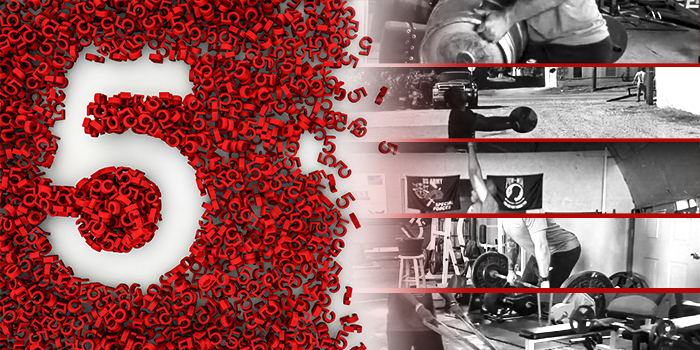
First and foremost, I want to begin this by stating that I am not against nor do I hate the Olympic lifts. It seems the use of Olympic lifts has become somewhat controversial in the strength and conditioning community. You seem to either be an Olympic lifting purist and believe that there is no other way to build optimal strength and power without them in your program. Or you are on the opposite end and are completely against utilizing any Olympic lifting in your program and think your athletes will immediately become injured if they even attempt to clean or snatch a barbell.
While I can see each side’s reasoning for their opinions, I think both extremes are wrong. The fact of the matter is coaches and trainers should utilize whatever means of exercise are most appropriate for their clients and will best help them reach their desired goals. Now, while I am not against Olympic lifting, I do think in a majority of circumstances, they are not the most appropriate or ideal exercise selection, whether it be due to the client lacking the training IQ, lack of time you have with the client, or a list of other potentially restrictive variables.
Unless you have a client who is competing in an Olympic lifting competition, then you do NOT have to program the Olympic lifts. There are several other movements that we can use for our clients to accomplish the same task but are safer and require much less instruction.
The Olympic lifts are fantastic movements, and when done properly with the maximum intention, they create incredible explosive power. They can be performed with many other goals in mind, but when broken down they are meant to create violently explosive human beings. The main reason for this is that the movements force triple extension if done correctly. Triple extension is the extension of the hips, knees, and ankles. Unless you are preparing for an Olympic lifting competition and have your mindset on a specific total, then chances are this is the training adaptation you are chasing.
Far too often, though, individuals have technical deficiencies that prevent them from successfully achieving the lift. Even if you do get the lift nailed down, the ability to create maximum intent and express the most power as possible may not happen! You are too worried about making a mistake and running through multiple cues in your mind just to get the lift down let alone do it as violently as possible as it is intended to be performed.
There are other alternatives to the Olympic lifts. These alternatives are similar in nature, as they force the individual into triple extension, therefore forcing the individual to express as much power as physically possible. One advantage to the alternatives is that they are easier to teach, and they are also are safer and easier for the individual to express maximum intent, and dare I say that they are more functional under certain circumstances.
These alternatives include:
1. Olympic Lifting Partials
This first one may be cheating, but as I previously mentioned, I do not hate the Olympic lifts. I personally think they do a great job of building tremendous power and strength at specific joint angles. A majority of this is through the first initial pull of the movement. Performing movements, such as the power shrug, can work far more effectively than the entire lift itself.
After that is where my love of them begins to fade. When you imagine what a bad Olympic lift attempt looks like or when you see an awful example posted across social media, you are typically envisioning the catch portion of the lift. The catch refers to the finishing position of the hang clean, power clean, and snatch. This is where you see the breakdown of these lifts occur the most, so why execute the catch?
The catch is done so we can monitor progress. If you have an athlete who can power clean 185 pounds at Week 1, and then by Week 8, can power clean 225 pounds, then they clearly became more powerful. It is a measurable effect of power. It’s true the risk versus reward may not be worth it, especially if the athlete had to compromise the quality of the lift and their well-being to achieve that 225-pound power clean.
If all of the benefits are in the first initial pull, then just leave your movements at that; there’s much less risk and all of the reward. The best option would be to progress the partial movements by bar speed through using a tendo unit, so if you could achieve a faster bar speed with a heavier weight or increase speed on the same weight, then clearly that is a sign of improvement.
I understand this is not a reality for most, but we can still view this from a bar speed perspective. We should use our eyes and common sense when progressing the movement. Testing explosive power can also be done in much more affordable and simpler means that we will discuss shortly.
2. Throws
Medicine ball throws are an explosive ballistic movement that is easy to teach, forces the athlete to create maximum intent, and is also pretty fun.
Throwing is also extremely affordable. If you don’t happen to have a medicine ball, you can throw various other objects, such as car tires, sandbags, or rocks. Really, all you need is a field and something to launch and you have no excuse not to get more powerful. There are several variations that can be done to meet different planes of power, whether it be horizontal, vertical or rotational.
The Backward Overhead Granny Throw will highlight triple extension and the ability to express power the best. You grab an object and throw it overhead behind you as far as possible. Just tell your clients to throw the ball as far as they can, and this explanation alone will have them using their entire body while trying to get the ball through the ceiling.
A lighter to moderate ball or object is better to use to ensure that you can reach appropriate speed to actually train for power. Power = Force x Velocity, so while throwing a 50-pound medicine ball overhead is certainly impressive, it will be extremely difficult to create optimal velocity, which will also limit our power output. Using a lighter ball between the six-pound and 10-pound range will be far more effective.
You can use this throw as a test to monitor power through training. This is far safer than performing a clean or snatch, and it will save you a ton of time on test day, so you can have more time to work with your clients working up to test day.
3. Jumps
Jumping is the ultimate demonstration of power. Many coaches will justify their use of the Olympic lifts to help their athletes or clients run faster and jump higher. Similar to the throws, there are several variations that can be done and can be easily modified to make the jumps more specific. The direction (vertical, horizontal, lateral, multi-directional, etc.) alone can be specified to create a higher transferability to sport.
Jumping is also one of the most simple, affordable tests you could implement to progress your clients.
Even if you don’t have access to a vertical jump tester, you can improvise or test a broad jump with a tape measure instead. Just keep in mind that risk versus reward scale when performing jumps in training. I understand that mega high box jumps and single-leg triple broad jumps look cool on Instagram, but you must ask yourself if the individual is physically prepared for the jump and if is it appropriate for them and their goals.
4. Sled Variations
The sled is one of the most versatile pieces of training equipment you could have! It can be used for conditioning, to train strength, to train speed, and also it can be used to help develop explosiveness and power. Using the sled to perform movements such as rows, high pulls, and even pushes or drags (aka heavy-ass sled drags/pushes popularized by coach Joe DeFranco) are fantastic alternatives to the Olympic lifts.
It is a great alternative because it is safe (you don’t have to worry about dropping a sled on yourself), easier to teach, and more flexible to work around if you have a wide array of individuals you work with or someone who is limited with movement. And there is little to no eccentric stress, so it can be implemented often and is great for in-season strength training when working with athletes.
5. Odd Object/Strongman Events
I saved this for last because these alternatives have been selected because they are safer and easier to teach in comparison to the Olympic lifts. While I personally believe it still remains to be true when performing odd object lifting and strongman-inspired events, such as tire flips and sandbag loading, I can also see an argument against that. It does take a little technique to successfully perform some of these movements, but the learning curve is much easier.
When performing these movements, you will need a tremendous amount of power! There is no other way to flip a 500-pound tire or lift a 200-pound sandbag off the ground and load it onto a platform. Of course, there can be technical breakdown in the movements, but the room for error when performing them is much smaller than the Olympic lifts and usually much safer to fail as well.
The beautiful thing about training is there are several different means to achieve the same adaptation. I don’t like to say there are good or bad exercises for individuals. There are just some movements that are more appropriate for individuals to use.
These exercises are better to help achieve the adaptation they’re trying to create and better reach their goals. And there are also some exercises that are not as appropriate for certain individuals and could potentially hinder the clients’ progress or even potentially hurt them.
The five alternatives listed above are going to be more appropriate exercises to develop power than the Olympic lifts for the majority of people you come across. It’s not that they are better exercises; it is that they are more appropriate. Unless you’re doing it for competitive reasons, don’t become married to specific exercises; instead, become married to the results you are trying to obtain.
Brandon Holder is a sports performance coach at FASST Sports Performance in Winchester, Virginia. He works with athletes of all ages and levels, ranging from nine-year-olds to Division I athletes. Along with that, he is the assistant strength and conditioning coach at Shenandoah University. Prior to FASST, Brandon was an assistant strength and conditioning coach at Bridgewater College, where he worked with more than 20 sports. He obtained his bachelor's degree in health and exercise science from Bridgewater College and holds CSCS, USAW, and FMS certifications as well.











6 Comments